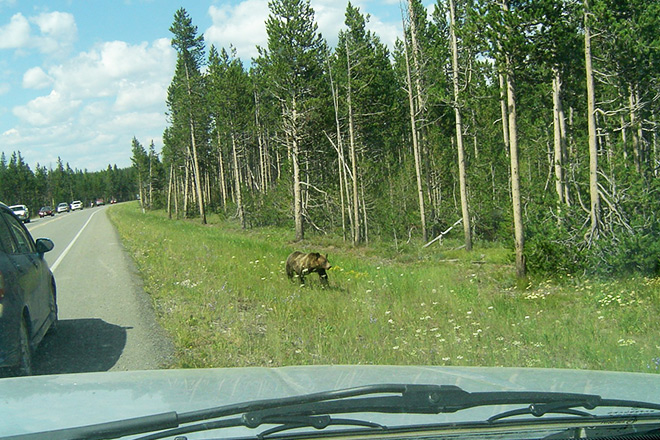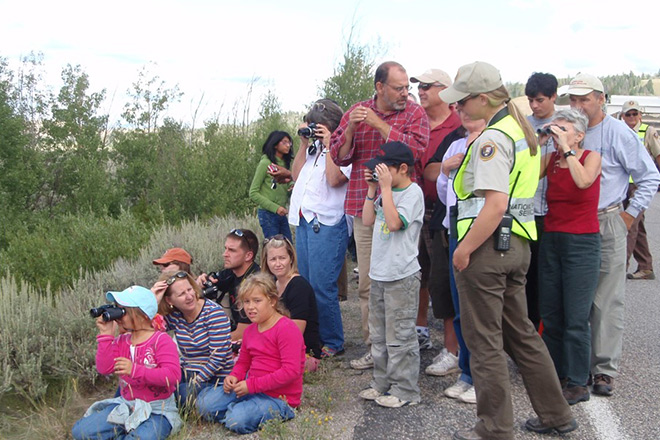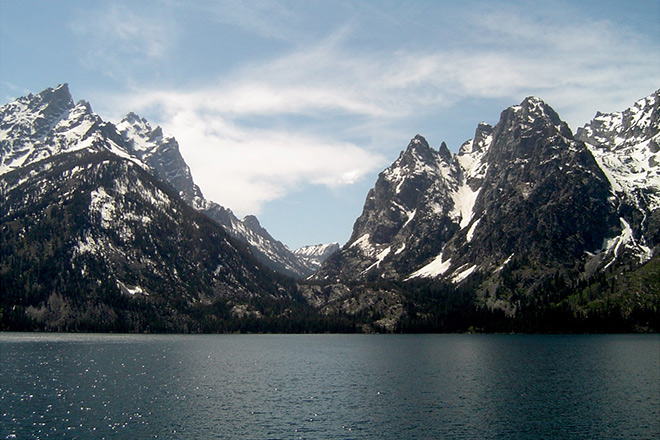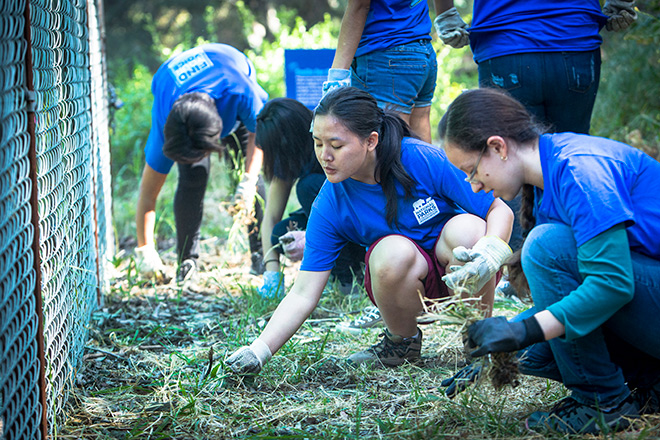Our job was simple: hike to Marion Lake in Granite Canyon. Tack on a few more details, like a novice backpacker, an unknown wilderness, a leaky can of tuna, and a problem bear, and things get a little more complicated.
As interns on Grand Teton’s Wildlife Brigade Team, my fearless, 5-foot-tall roommate Annie and I had spent the summer educating park visitors about living in bear country while wandering from campground to campground and trail to trail. We confiscated coolers and foodstuffs abandoned at unattended picnic tables, talked with whomever we came across, and attempted to insert mindfulness into the mayhem of animal-induced traffic (a type of rubbernecking coined “bear jams” or “fill in the animal here jams”). Our objective: keep wildlife wild and visitors safe.
You could say we had gotten to know the park’s geography and the mindset of its tourists well. What we didn’t expect, however, was for our supervisor to send us looking for a bear that was sniffing around backcountry campsites, looking for food.
When I accepted the task, I didn’t mention that I’d never been backpacking before. Nor did I mention that, outside of our training sessions, I’d never used the bear spray attached to my belt. I focused instead on how adventurous the assignment sounded.
Strapping on our packs and setting off for a three-day trip into the backcountry, Annie and I kept our ears and eyes open as we chatted our way along the trail. Miles later, the landscape opened up and we found ourselves on top of a knoll, looking down at an alpine lake backed by a craggy ridgeline. We’d made it. After pitching the tent, touring the area, and snapping photos of the vibrant wildflowers, a dense cloud settled over the valley. We huddled in the tent, prepared to wait out the weather. As day descended into night and the rain continued unabated, our hunger led us to eat dinner inside. This was a poor decision, especially in light of our roles on the Wildlife Brigade and our knowledge of safe practices in bear country. As anyone who has ever been on the trail can attest, however, circumstances can overrule good sense. (Learn more about bear safety at Grand Teton here.)
Predictably, Annie’s tuna juice fell on the floor of the tent. No, there wasn’t a spare tent that I could pitch a few football fields away. Yes, of all the food to spill, she chose the smelliest. And, yes, it was a very long night as we wondered if that bear we’d been sent to find might find us instead.
Two days later, we returned to our Wildlife Brigade comrades with a gloriously boring report: It rained every day, and there was no sign of bears. The tuna juice? We never mentioned it.
***
Beyond teaching me about bears, my three months in Grand Teton reinforced how integral volunteers are to the functioning of a park. The people I worked alongside were inspiring and infectiously optimistic. Without exception, everyone was passionate about parks and embodied a work ethic that was full of life, humor, and patience. Of different backgrounds, ages, and experience levels, only a few of us were actually National Park Service (NPS) employees. The rest were short- or long-term volunteers or interns sponsored via partnering nonprofit organizations. Despite our differences, we were all ambassadors of NPS, the park, and the wildlife within its borders.
Now at NPCA, I see volunteers every time I visit a park. They resemble park rangers, but their uniform, arm patch, and nametag are slightly different. They also may seem somewhat younger or older than your average employee. Perhaps most notably, volunteers lack a ranger’s characteristic “flat hat.” Once you know how to spot them, you’ll find volunteers everywhere.
They may provide your family’s tour of a popular hiking path, hand out directions at a kiosk, answer questions at a historic monument, remove invasive species along a trail, serve as your campground host, rebuild rock staircases, or stand behind a desk at a visitor center. I’ve even discovered them providing crowd control at the Cherry Blossom Festival on the National Mall in Washington, D.C.
These individuals are a part of the larger NPS team, and in many cases do nearly identical work as NPS employees. The biggest difference? They work for free. So, why don’t parks simply hire more employees to take on these tasks?
To put it bluntly: NPS can’t afford it.
NPS operates under a crippling budget shortfall. The current NPS maintenance backlog is nearly $11.5 billion. Fiscal constraints impact park tours, visiting hours, cleanliness, safety, visitor services, and infrastructure. According to NPS, park volunteers currently outnumber employees by about ten to one.
It is impossible to resolve this monumental problem without congressional action. Thankfully, parks have advocates like you and me to agitate for change, and they also have thousands of willing volunteers who help make the visitor experience safer and more enjoyable.
I am fortunate that, when given the opportunity to spend two summers of my life in two of our country’s most well-known parks, I could say yes. I believed my service would help those parks. What I didn’t fully anticipate was how much those summers, surrounded by park rangers and park volunteers, would impact me.
***
NPCA recently launched Find Your Voice, an initiative to encourage more people to get involved with their parks. Whether you want to volunteer once or on a regular basis, or whether you simply want to bring your loved ones into the parks, Find Your Voice is for you. You can participate in the many events NPCA will host across the country this year, or write your senators and representatives to tell them you support fully funded national parks.
The time to act is now. (But, please, leave your cans of tuna at home.)
Learn more about Find Your Voice and read our suggestions for 5 Ways to Pitch In and Make a Difference.
About the author
-
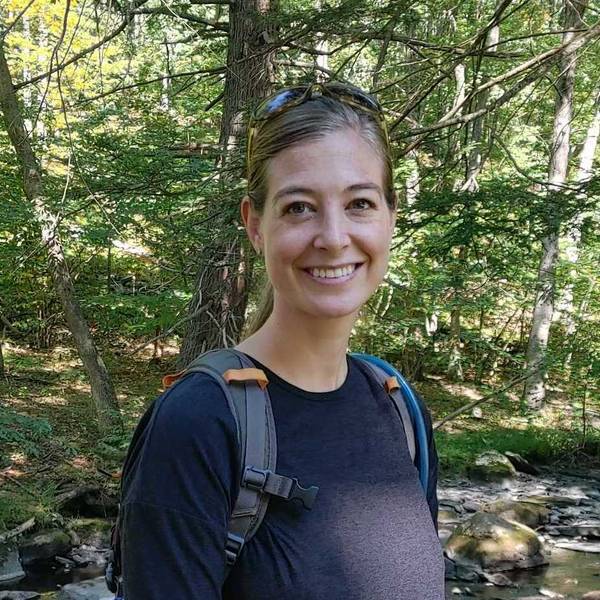 Katherine DeGroff Associate and Online Editor
Katherine DeGroff Associate and Online EditorKatherine is the associate editor of National Parks magazine. Before joining NPCA, Katherine monitored easements at land trusts in Virginia and New Mexico, encouraged bear-aware behavior at Grand Teton National Park, and served as a naturalist for a small environmental education organization in the heart of the Colorado Rockies.
